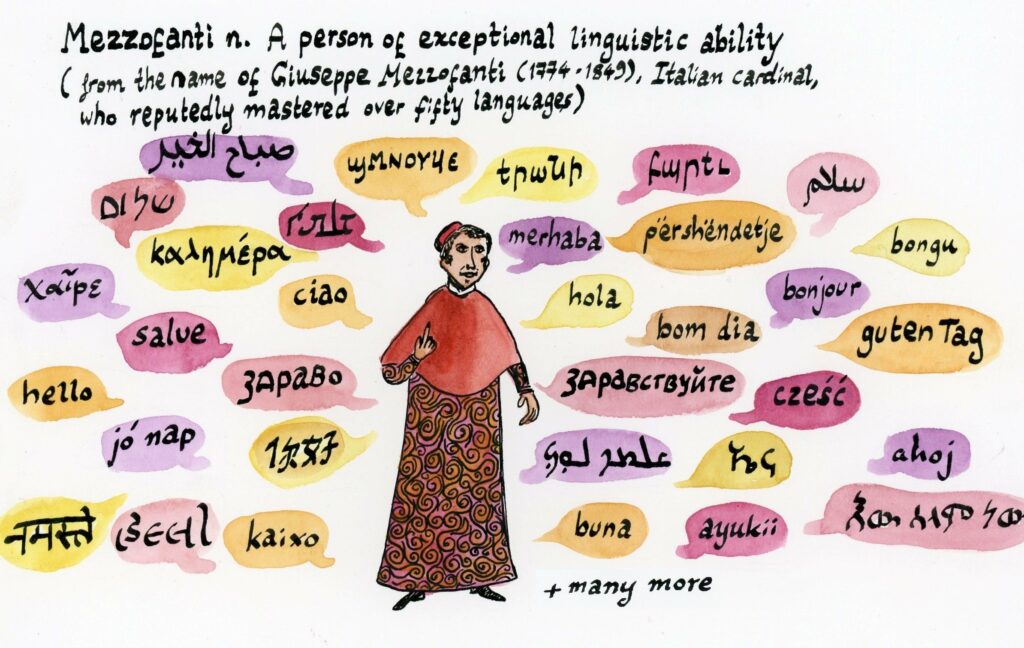Each greeting is a key to a new world, each language a different reality. Ludwig Wittgenstein once said, ‘The limits of my language are the limits of my world.’ Today, we explore those who live beyond such limits, the multilingual masters.
Language is our bridge to the world, and today we are going to cross that bridge together.
Did you know that the human brain has the astonishing capacity to learn and fluently use not just two or three, but dozens of languages? Today, we dive deep into the minds of those extraordinary individuals known as hyperpolyglots.
First, what is a polyglot? It’s someone who can converse in several languages beyond their native tongue. While some of us pride ourselves on knowing a second or third language, polyglots push these boundaries, turning language into an art form.
The benefits of learning languages extend beyond ordering coffee in Paris or asking for directions in Tokyo. It reshapes our brain, enhancing memory, decision-making, and even multitasking skills. It is a workout for the mind, with each new language sculpting our neural pathways. Language learning isn’t just an intellectual feat; it’s a cognitive revolution. Wittgenstein would agree that to speak another language is to inhabit a new form of life. Each new tongue learned opens up another vista of thought, another way to interpret and interact with our world.
Now, let’s elevate the bar – meet the hyperpolyglots. These linguistic athletes aren’t satisfied with just a handful of languages. Six, ten, or even more, they break the shackles of what we deem possible. Hyperpolyglotism isn’t just about learning; it’s about mastering and living through languages.
The journey to becoming a hyperpolyglot is akin to climbing Everest. As one ascends the linguistic mountain, the air gets thinner – each new language poses a greater challenge than the last. Yet, the view from the top, the ability to connect with people in dozens of tongues, is breathtaking.
History has witnessed some spectacular minds. Consider Giuseppe Mezzofanti, a 19th-century cardinal who mastered over 30 languages, or Ziad Fazah, who claims to speak 58 languages. And then there’s Emil Krebs, the linguistic wizard who dabbled in over 60 languages, a testament to the incredible elasticity of the human brain.

These giants of language didn’t just collect languages as one collects stamps. They collected experiences, thoughts, and lives. Their minds were gardens where countless forms of life flourished.
What sets these individuals apart? Studies suggest a mix of innate talent and relentless dedication. Hyperpolyglots don’t just study; they immerse themselves, often thinking, dreaming, and living in multiple languages.

In our era, such prodigies walk among us. Alexander Argüelles is known for practicing up to twenty languages daily. Timothy Doner reached internet fame for his proficiency in over twenty languages as a teenager. Their secret? A voracious curiosity and a passion for cultures that transcends borders.
In closing, the tale of hyperpolyglots is not just about the number of languages they master. It’s about the human spirit’s boundless potential. Each word, each sentence they learn, is a thread weaving a richer tapestry of human connection.
In the spirit of Wittgenstein, let’s recognize that the journey of a hyperpolyglot is a journey to expand the horizons of their world. I invite you to ponder – how might your world change if you added another language to your repertoire? What new forms of life might you discover?



